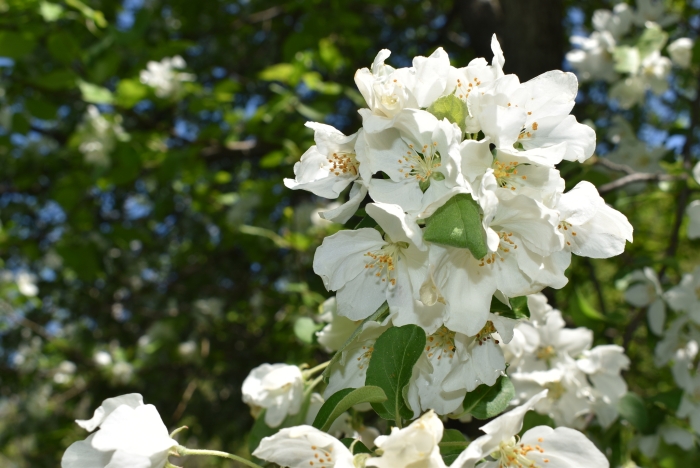Manchurian Crab Apple
(Malus mandshurica)
Manchurian Crab Apple (Malus mandshurica)
/
/

Repina Tatyana
CC BY 4.0
Image By:
Repina Tatyana
Recorded By:
Copyright:
CC BY 4.0
Copyright Notice:
Photo by: Repina Tatyana | License Type: CC BY 4.0 | License URL: http://creativecommons.org/licenses/by/4.0/ | Rights Holder: Repina Tatyana | Publisher: iNaturalist | Date Created: 2022-05-17T10:14:03-07:00 |






















Estimated Native Range
Summary
Malus mandshurica, commonly known as Manchurian crab apple, is a deciduous tree native to temperate mixed forests and forest edges in Northeast Asia, including regions of China, far eastern Russia, North Korea, and Japan. It is sometimes considered a variety of the Siberian crab apple, Malus baccata. The Manchurian crab apple typically grows to a height of 15-30 feet (4.5-9 meters) with a similar spread, featuring a rounded canopy with dense foliage. Its leaves are oval-shaped with serrated margins, turning yellow or red in the fall. In spring, it produces showy white to pink flowers, followed by small, yellow to red fruits that persist into winter, providing visual interest and food for wildlife.
The Manchurian crab apple is valued for its ornamental flowers and fruit, which make it a popular choice for garden and landscape plantings. It is also used as a rootstock for cultivated apples in China due to its cold hardiness and disease resistance. This tree prefers full sun to partial shade and can adapt to a variety of soil conditions, though it thrives in well-drained, loamy soils. While generally low-maintenance, it can be susceptible to common apple diseases such as fire blight and apple scab. Gardeners may also use it as a pollinator for other apple varieties, as its long bloom period ensures cross-pollination.CC BY-SA 4.0
The Manchurian crab apple is valued for its ornamental flowers and fruit, which make it a popular choice for garden and landscape plantings. It is also used as a rootstock for cultivated apples in China due to its cold hardiness and disease resistance. This tree prefers full sun to partial shade and can adapt to a variety of soil conditions, though it thrives in well-drained, loamy soils. While generally low-maintenance, it can be susceptible to common apple diseases such as fire blight and apple scab. Gardeners may also use it as a pollinator for other apple varieties, as its long bloom period ensures cross-pollination.CC BY-SA 4.0
Plant Description
- Plant Type: Tree
- Height: 10-20 feet
- Width: 10-15 feet
- Growth Rate: Moderate
- Flower Color: White
- Flowering Season: Spring
- Leaf Retention: Deciduous
Growth Requirements
- Sun: Full Sun, Part Shade
- Water: Medium
- Drainage: Medium
Common Uses
Bird Garden, Deer Resistant, Edible*Disclaimer: Easyscape's listed plant edibility is for informational use. Always verify the safety and proper identification of any plant before consumption., Fragrant, Low Maintenance, Showy Flowers
Natural Habitat
Temperate mixed forests and forest edges
Other Names
Common Names: Manchurian Crabapple, Mandschurian Apple
Scientific Names: , Malus mandshurica, Malus baccata subsp. mandshurica, Malus baccata subsp. sachalinensis, Malus baccata subsp. zhukovskyi, Malus baccata var. mandshurica, Malus mandshurica, Malus mandshurica subsp. sachalinensis, Malus mandshurica subsp. zhukovskyi, Malus mandshurica var. genuina
GBIF Accepted Name: